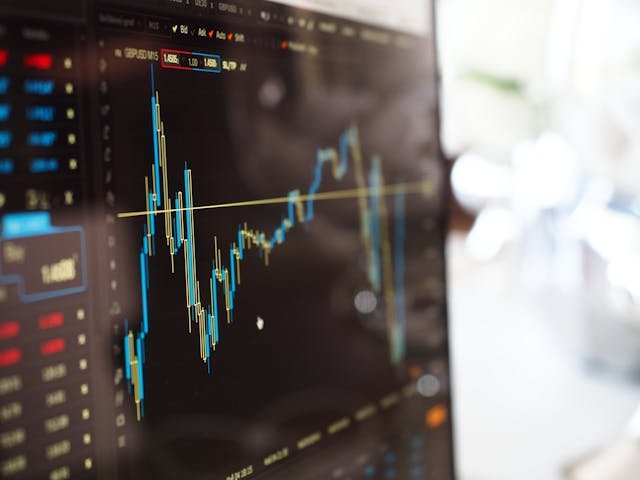
The Stochastic Oscillator is a popular technical indicator used in market analysis to measure the closing price relative to the high-low range over a specific period of time. This indicator helps traders identify overbought or oversold market conditions and provides potential signals for trend reversals. In Forex trading, the Stochastic Oscillator is very useful for finding price turning points and providing information about market momentum.
1. Key Components of the Stochastic Oscillator
The Stochastic Oscillator consists of two main components that help traders read the market conditions:
- %K Line: This is the main line that shows the current closing price’s position relative to the highest and lowest price over a given period. It is considered the fast line of the oscillator.
- %D Line: This is the line that is calculated as a moving average of the %K line, typically over 3 periods. It serves to smooth out the %K line and is used to generate trading signals.
The value of the Stochastic Oscillator ranges from 0 to 100, with readings above 80 indicating an overbought condition and readings below 20 indicating an oversold condition. When the indicator enters these zones, a significant trend reversal may occur.
2. How to Calculate the Stochastic Oscillator
The basic formula for calculating the %K line in the Stochastic Oscillator is as follows:
%K = ((C - Lₙ) / (Hₙ - Lₙ)) × 100
Where:
- C = Current closing price
- Lₙ = Lowest price over the past “n” periods
- Hₙ = Highest price over the past “n” periods
After calculating %K, the %D line is derived as a moving average of %K over three periods, providing smoother signals and more accurate trend analysis.
3. Interpreting the Stochastic Oscillator in Forex
The Stochastic Oscillator provides various signals that are useful for Forex traders in market analysis. Here are a few ways to interpret this indicator:
- Overbought Condition: When the Stochastic Oscillator is above the 80 level, the market is considered to be in an overbought condition. This may signal that prices are too high, and a trend reversal to the downside could occur.
- Oversold Condition: When the Stochastic Oscillator is below the 20 level, the market is considered to be in an oversold condition. This can indicate that prices are too low, and a trend reversal to the upside may take place.
- Divergence: Divergence between the price and the Stochastic Oscillator is a strong signal for a potential trend reversal. For example, if the price makes a lower low, but the Stochastic Oscillator makes a higher low, it suggests that the trend may be losing strength and a reversal is likely.
4. Trading Signals with the Stochastic Oscillator
Several trading signals can be generated using the Stochastic Oscillator, including:
- Crossover: A buy signal occurs when the %K line crosses above the %D line, suggesting a potential bullish trend reversal. Conversely, a sell signal occurs when the %K line crosses below the %D line, indicating a potential bearish reversal.
- Overbought and Oversold: When the indicator enters the overbought or oversold zone, traders may anticipate a trend reversal. In overbought conditions, traders might consider selling, while in oversold conditions, traders might consider buying.
5. Advantages and Disadvantages of the Stochastic Oscillator
Like any other indicator, the Stochastic Oscillator has its advantages and disadvantages, which traders should understand:
- Advantages: The Stochastic Oscillator is highly effective in identifying overbought and oversold market conditions, which often precede price reversals. This allows traders to anticipate trend changes early.
- Disadvantages: Although effective in certain market conditions, the Stochastic Oscillator can produce false signals in strong trending or sideways markets. Therefore, it is better used in conjunction with other indicators to confirm signals.
6. Conclusion
The Stochastic Oscillator is a valuable tool for Forex traders to identify potential trend reversals by measuring overbought and oversold conditions. By understanding how to use this indicator effectively, traders can enhance their ability to analyze the market and make better trading decisions. However, it is highly recommended to use the Stochastic Oscillator along with other indicators to confirm signals and avoid false signals.